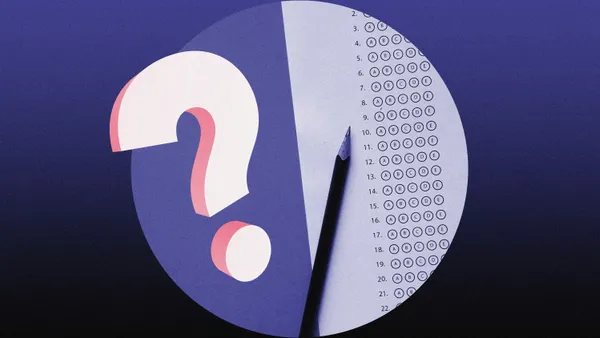Dive Brief:
- One-to-one tutoring can lower absenteeism rates by fostering student-teacher relationships and a sense of belonging, making students more willing to go to school, recent research from Stanford University’s National Student Support Accelerator found.
- The study, posted by the Annenberg Institute at Brown University, looked at the High-Impact Tutoring Initiative launched in 2021 to provide math and reading tutoring across 141 Washington, D.C., public K-12 schools — with the greatest focus on serving at-risk students.
- The positive effects were particularly strong for middle school students and students with extreme absenteeism rates in the prior year, who were 13.7% and 7% less likely, respectively, to be absent when tutoring sessions were scheduled, the study found.
Dive Insight:
The national chronic absenteeism rate remained persistently high at 28% for the 2022-2023 school year, although it had trended downward from 30% the previous year. Nearly a year ago, in March 2024, the U.S. Department of Education sounded an alarm, urging schools nationwide in an open letter to address and track chronic absenteeism.
Students from 141 schools participated in tutoring funded by the District of Columbia Office of the State Superintendent of Education during the 2022-2023 school year at schools and community hubs. On average, the probability of being absent was 1.2 percentage points lower on days that a student had a tutoring session scheduled, representing a 7% decrease in students’ overall likelihood of being absent, the Stanford study found.
Some factors driving absenteeism, according to researchers, include academic challenges or poor academic performance, unsafe school climates or an excessively punitive school environment. Other external factors like economic or family obligations, chronic health issues and neighborhood crime can also impact a student's ability to attend school.
Strategies to combat absenteeism include phone calls and text messages to parents. But a more intensive approach is often needed for students who feel less connected to school and have the highest absenteeism rates. One of these approaches is high-impact tutoring.
The report describes effective high-impact tutoring as characterized by small group sizes, regular and frequent sessions, well-trained and consistent tutors, high-quality instructional materials, and utilizing data to identify students’ strengths and needs.
High-impact tutoring targets many of the underlying factors that also drive absenteeism. For example, meeting with a tutor consistently throughout the school year can help develop supportive relationships, which leads to a greater sense of belonging. Also, small tutor-to-student ratios can help tutors cater to individualized academic needs — making students feel more connected to one another and to the academic content, the report found.
The report found comparatively larger decreases in absenteeism when tutoring was held during school hours or had a smaller tutor-to-student ratio.
If tutoring were scheduled as a regular part of every school week — the report suggests three days per week — this would translate into participating students attending 1.3 more days of school over the course of a school year. Embedding these tutoring opportunities into the school day also helps make tutoring more inclusive for students with challenges like after-school transportation or caretaker responsibilities for their siblings.
The report further suggests schools create supportive learning environments that effectively address ongoing academic challenges while fostering positive relationships and stronger connections to the school community.
Correction: A previous version of this story misidentified the source of the tutoring study, which was conducted by Stanford University’s National Student Support Accelerator and posted by the Annenberg Institute at Brown University. We have updated our story.












